Story of the Census
20 June 2022
From a suffragette hiding in a broom cupboard to the first official records of ethnicity and religion, the census is the story of all our lives.
This is an account of how we counted people, from 1801 to 2021, and how the concerns of the day entered into record.
Bread, burials and baptisms
In the years up to 1800, the harvests were disastrous. Bread imports were being blocked in the war with France. Parliament was worried there was not enough bread to feed the population, but no one knew how many people there were to be fed. Population estimates based on bread production, taxes, and church registers of burials and baptisms were vague.
There were fears the population might be growing faster than food production, leading to future famine, but it was impossible to know if the population was increasing or not.
So, the Census Act was made law by royal assent on 31 December 1800, the day before the UK was officially formed by the union of Great Britain and Ireland.
John Rickman –
‘father of the census’
The first four decennial censuses in Great Britain in 1801, 1811, 1821 and 1831 were run by John Rickman.
Rickman’s first census in 1801 found the population of England and Wales was 8.9 million, not counting those at sea, in the military, or prisoners.
That’s roughly what the population of London was in 2020.
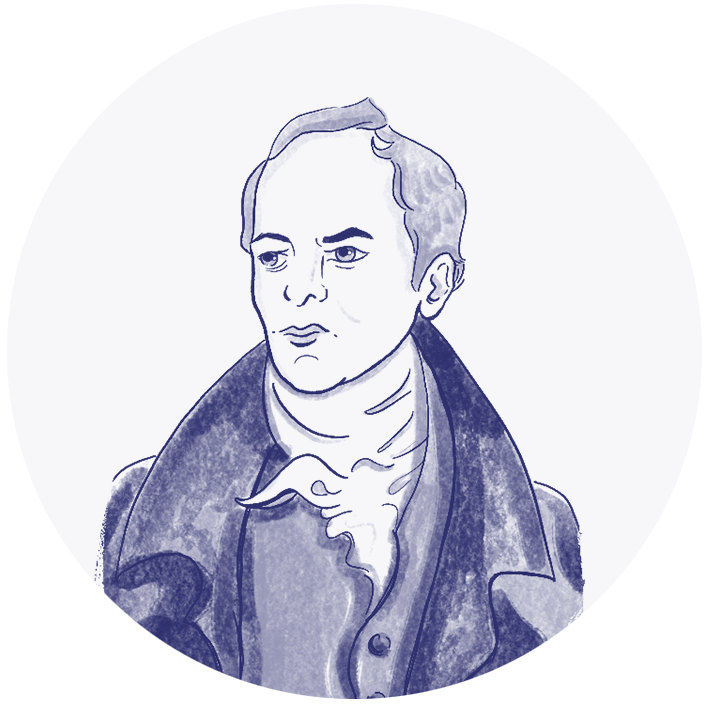
What do you do for work?
The 1801 Census asked if people worked in one of three types of job: agriculture; a ‘trade, manufacture or handicraft’; or ‘other’.
This caused some confusion as in the 1800s people largely worked as family units, rather than thinking of work as an individual’s job. Some households would list a wife and children as working in agriculture or a trade with the head of household, some would list them as ‘other’. In 1811, the census asked about work by family instead to make sure the question was better understood.
Over the next few decades, the occupations list was expanded. In 1821, the census counted retail traders, those employed in manufacturing, labourers, those employing others, and professionals such as bankers ‘and other educated men’.
By 1841, the census revealed that the most popular occupation was ‘domestic servant’ and almost a quarter of a million people worked in cotton manufacture. There were also 571 ‘fork-makers’, 74 ‘leech bleeders’ and five ‘ice-dealers’.
How old are you?
The 1821 Census showed that almost half the population was under 20 years old, compared with around a quarter today.
Despite its usefulness, asking how old people were proved surprisingly difficult.
Indeed, the 1881 Census report found a great deal of ‘wilful misstatement of age’ by girls and women, mostly depending on whether they were married.
This newspaper cartoon from 1891 shows a census enumerator and a ‘lady of uncertain age’. Even much later, in 1951, women were asked to be more honest about how old they were.
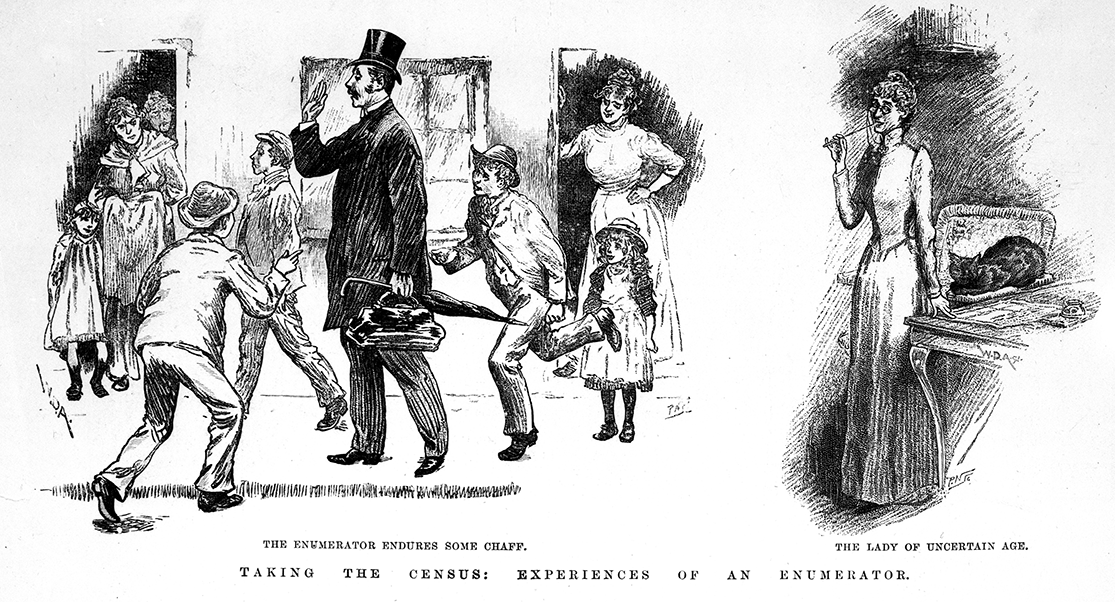
Rather than households completing forms for themselves, the early censuses, up to 1831, were carried out by an enumerator filling in counts for local areas. The task of census-taking was given to Overseers of the Poor and clergy, who detailed local births, marriages and deaths.
1841 – was the first ‘modern’ census, led by the General Registrar ‘Mr Lister’, with forms filled out by households directly. Many people couldn’t read or write and getting all the returns was a challenge but the exercise of people filling in their own census was deemed a success. It was also the first census form available in Welsh.
By the 1850s, the census revealed people in certain jobs were dying younger than others. This was done by joining up the new official deaths register with people’s occupation and age from the census.
Statistician
William Farr
‘Miners die in undue proportions… tailors die in considerable numbers at younger ages… the Poor Law apparently affords inadequate relief to the worn-out workman.’
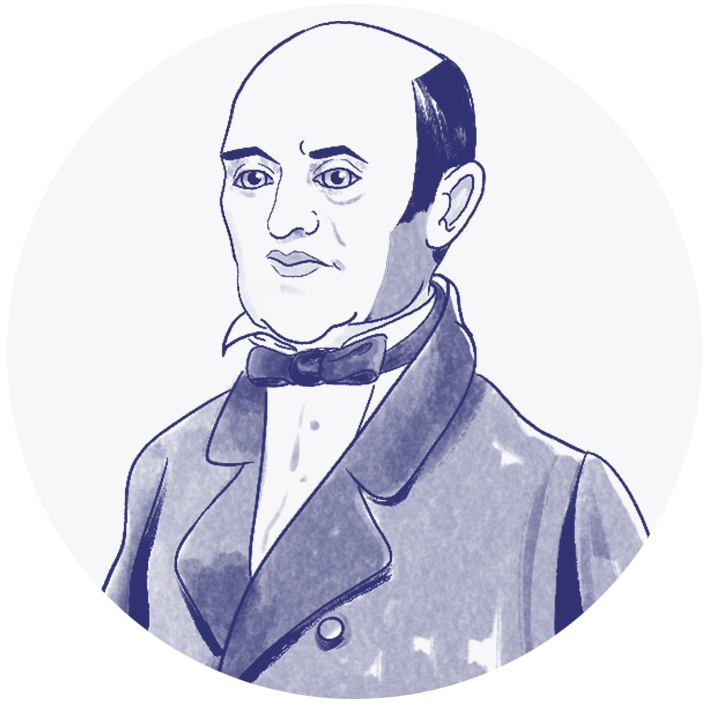
Infirmity and ‘idiots’
Disabilities were first recorded in the 1851 Census, which asked if someone was ‘blind’ or ‘deaf and dumb’.
In 1871 and 1881, the census aimed to count those with mental difficulties, although the language used to describe people is offensive by today's standards.
It asked if someone was a ‘lunatic’, ‘imbecile or idiot’.
By 1901, the term ‘idiot’ was removed and replaced with ‘feeble-minded’. It was felt the word ‘idiot’ was too derogatory to encourage accurate reporting. Statisticians had already doubted that anyone would describe their child as such.
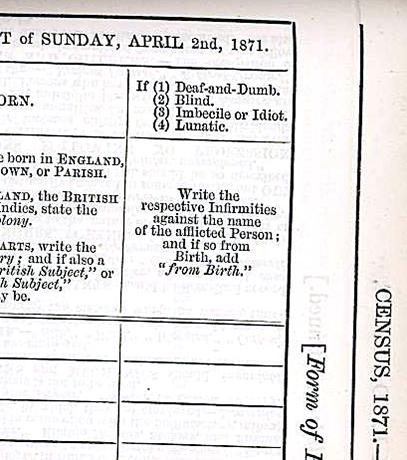
Welsh and Gaelic speakers
The 1881 Census provided the first count of Gaelic speakers in Scotland, followed by a question on Welsh speakers in 1891 to those living in Wales and Monmouthshire.
This was the first time Welsh people had had an option to record a distinct identity through the census. The Registrar General thought the numbers of people only able to speak Welsh were overstated as they included very small infants who were too young to speak. His statement caused offense and he wrote to Welsh MPs explaining he had ‘no intention’ of accusing the Welsh people of untruthfulness. Nevertheless, the question was a step forward in representation and remains today, for people aged three years and over.
The 1891 Census also contained a question about the number of rooms in each household because of concerns about overcrowding. In 1891 and 1901, the number of rooms was only required if the household occupied fewer than five rooms. The question was later asked of all households.
1891 was the first census in which women were employed as census takers.
Votes for women
The early 1900s were characterised by renewed interest in social classes, rapid population growth in cities, and debates over the social roles of women.
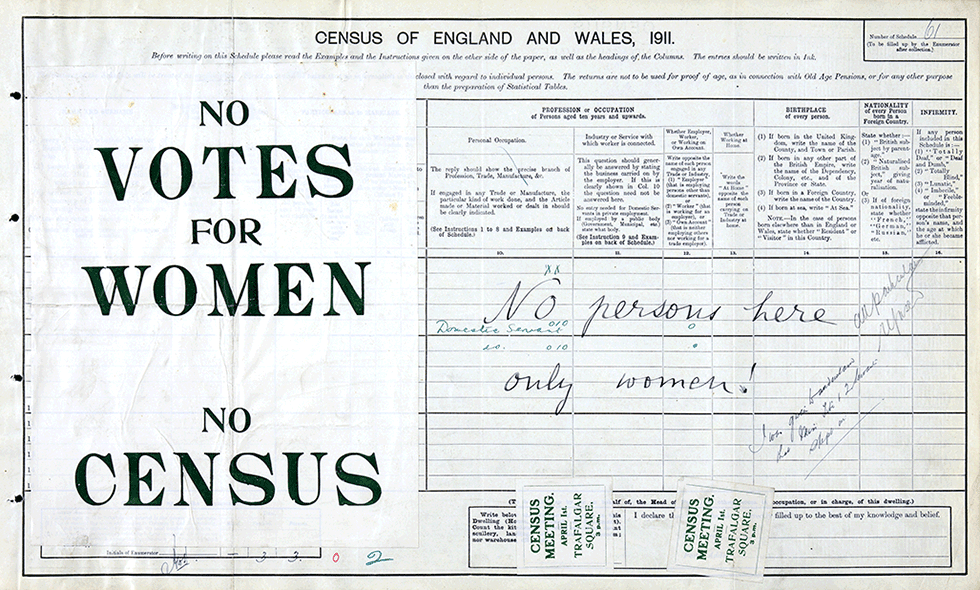
A suffragette campaign to boycott the 1911 Census encouraged women to risk fines for non-completion of the census form to protest for the right to vote. In some towns and cities women gathered for census parties so they would not be recorded at home. Campaigners argued that if women had no vote to count in electing government, then women themselves would refuse to be counted by government. Many also objected to new questions asked of women about the length of their marriage and number of children.
‘Found hiding in crypt’
Suffragette Emily Davison hid in a broom cupboard in the House of Commons overnight during census.
Her address survives on record as ‘found hiding in crypt of Westminster Hall, Westminster’.
A commemorative plaque has been placed in the tiny space where she hid.
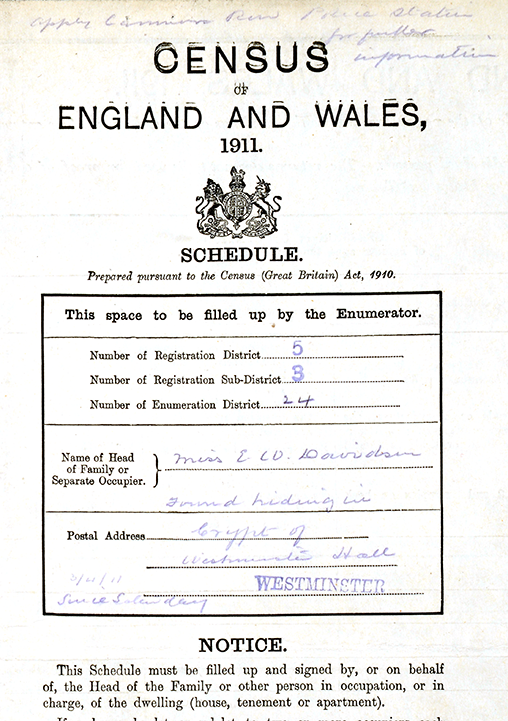
Emily Davison
Suffragette
Ms. Davison died in 1913, five years before some women gained the right to vote in 1918. While all men aged over 21 were now able to vote, women were only granted the vote if they were over 30 years of age and they or their husband owned a certain amount of property. Equal voting rights for all women of voting age came into law in 1928 in the Equal Franchise Act.
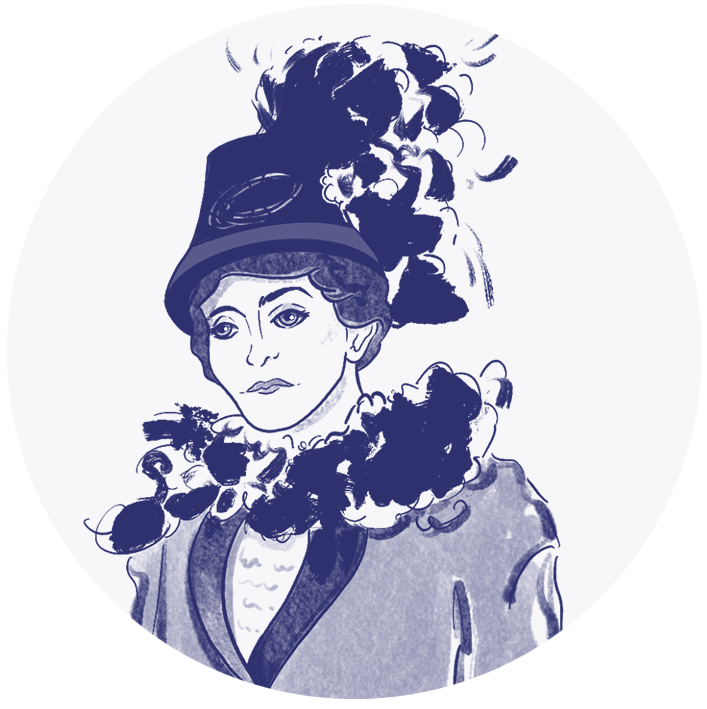
The 1911 Census instructions noted women’s occupations for the first time. Domestic care of the family was not to be included as work.
1911 was the first census to use punch cards to process data.
Widows and orphans
The 1921 Census was the only census ever to record orphanhood. Recorded after the First World War and the Spanish Flu Pandemic, the census reflected stark losses in numbers of young men.
Recently digitised tables are now available for counties and districts in England and Wales. Read the article on Population, Widows and Orphans in 1921.
1921 population
The 1921 Census in England and Wales shows the impact of war through a stark difference in the number of males and females in their 20s and 30s.
Strikes and the Great Depression
The Black Friday miner’s strike of 1921 led to the census being pushed back to June, the first time a census had had to be postponed.
Unemployment had become an urgent issue after the Wall Street crash in 1929, with particular concern about those in the mining and shipbuilding industries.
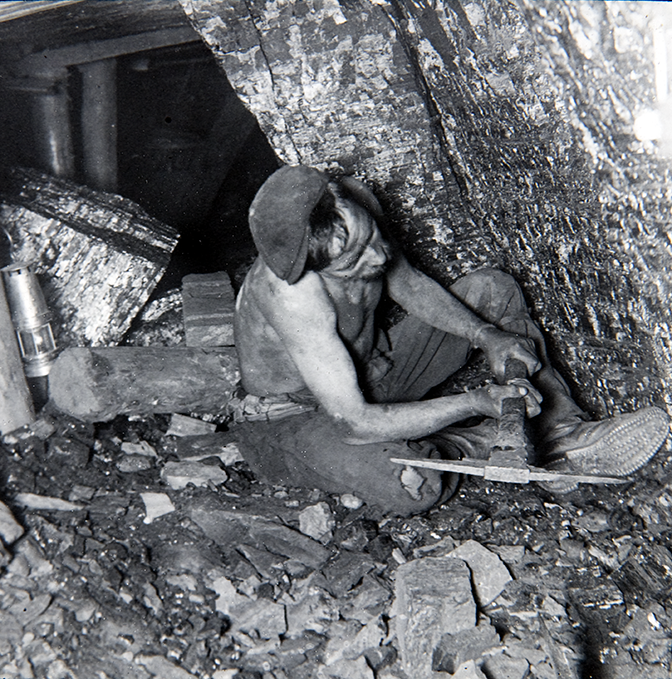
The 1931 Census gave more detailed instructions for people filling out the census who had no work or no prospect of work to state what their last occupation was. It found very high proportions of unemployment in industries such as cotton weaving, shipping services, puddling furnaces for metal making, and mining for lead, tin and copper.
The 1931 Census was also the first census to be advertised on radio, following the birth of the BBC in 1922. No clips survive of the broadcast.
The 1942 fire
A devastating fire destroyed the individual returns for the 1931 Census in England and Wales on Saturday 19 December 1942. However, published statistics for the 1931 Census are available for England and Wales, counties, local authorities, and civil parishes as the statistical tables based on the returns were stored elsewhere.
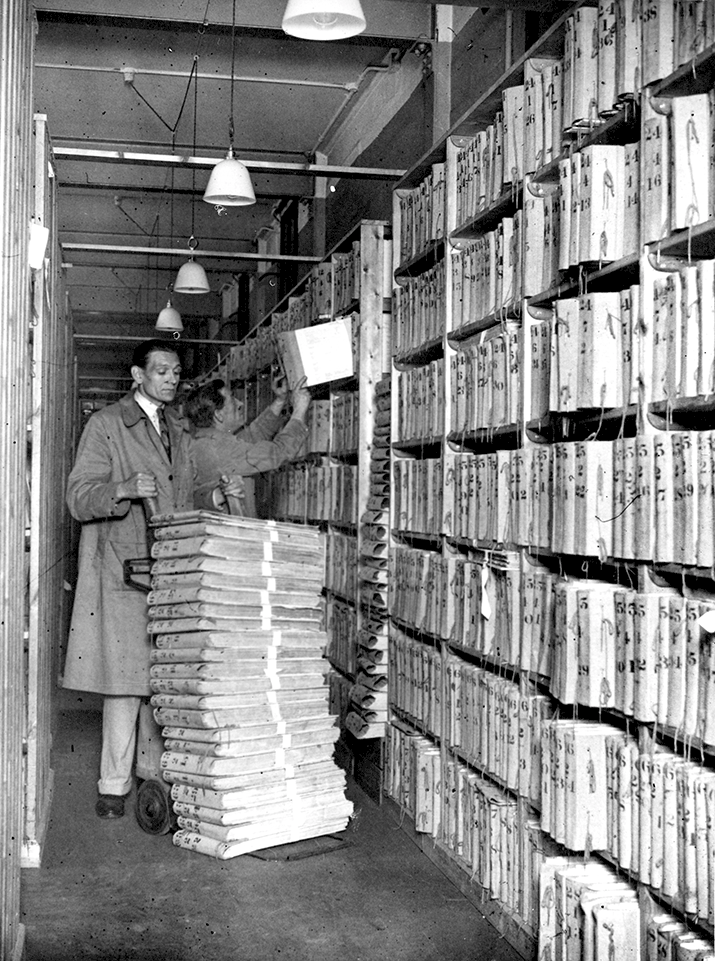
A letter from Mr Derrick of the General Register Office said the fire was a mystery as it was not caused by enemy action and had taken hold despite special fire hydrants and a guard of six ‘paid watchers’.
“It is hardly possible to imagine a more complete state of devastation than the scene presented to us in which it was impossible to see where some of the racks had stood and where the remains were nothing more than shapeless mounds of paper rubbish dragged outside the building by the firemen who tackled the fire and where even the least damaged sheets that were recognizable were charred to the depth of two or three inches on all edges. The store must be regarded as a total loss.”
He recommended that census records of different types, including maps, should be stored separately to prevent the same loss again.
Today, historic paper copies of census returns are held in deep storage in secure locations. All personal census returns are kept private for 100 years.
The Scottish 1931 Census returns were fortunately stored in Edinburgh at the time of the fire and can be released in 2031.
Second World War 1939 to 1945
The 1941 Census was cancelled because of the Second World War, but in 1939 a census-like operation saw the creation of a National Register.
In September 1939, names, dates of birth and occupations of all civilians in the UK were recorded to issue identity cards. The information was used to help organise rationing from 1940 and understand the nation’s manpower resources.
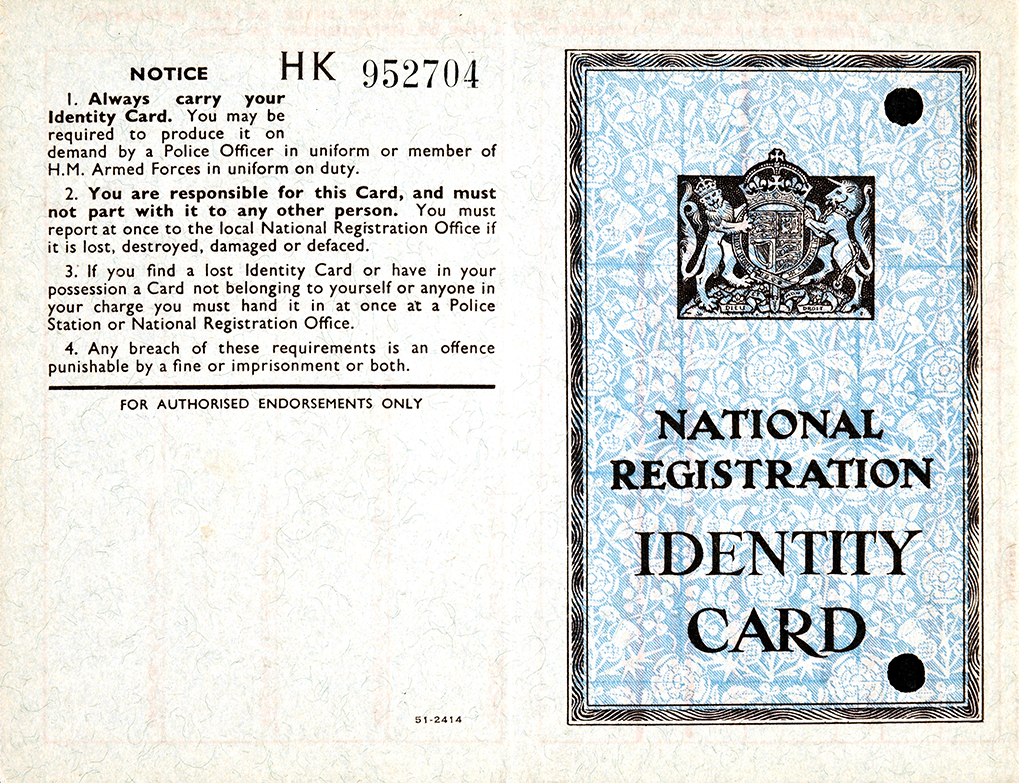
Rebuilding after the war
1951 – the very first television adverts for census in 1951 showed the importance of understanding housing issues after the war and how people had been displaced. Subtitles are available for this clip.
1961 – was the first census processed on a computer, the IBM 705 machine. Tables showed more detail on household facilities, such as indoor toilets. Small Area Statistics for England and Wales have now been fully digitised. You can see what the tables said about your area in 1961 using the interactives in this article.
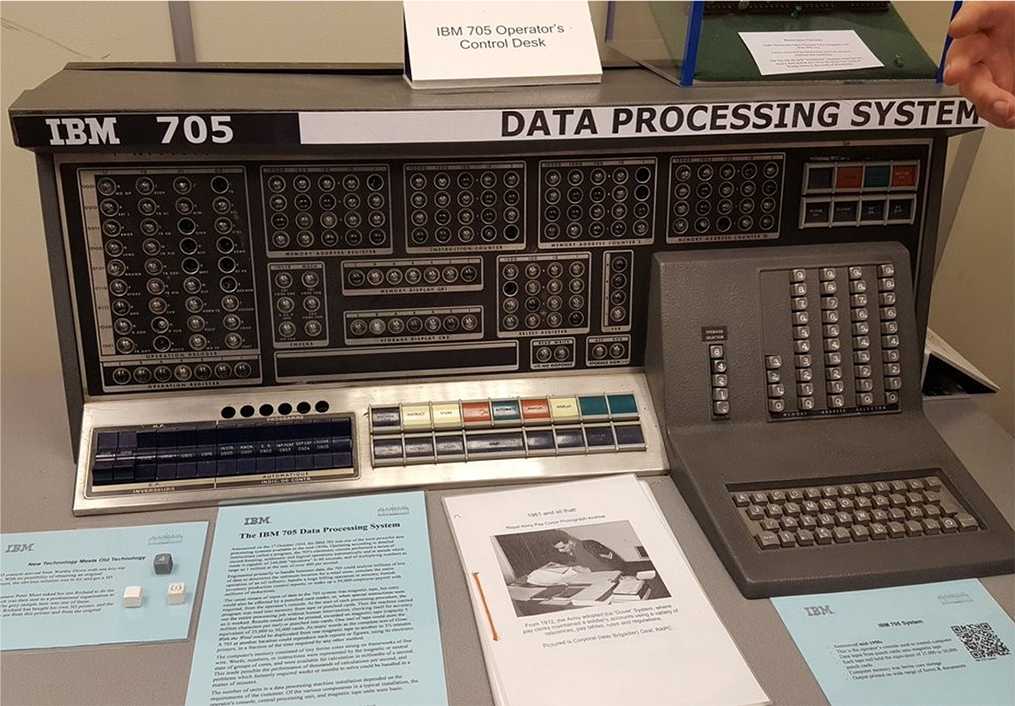
1966 – a rapidly evolving post-war Britain had an urgent need for up-to-date data on living conditions and population. A mini ‘sample census’ was held, asking 1 in 10 households to answer census questions. This was the only mid-decade census held in Great Britain.
1971 – questions on transport to work and car ownership first appeared in this census.
1981 and 1991
Ethnicity was first asked about in the 1991 Census. There had been a proposal to include an ethnic group question ten years earlier, but it was dropped from the 1981 Census following testing. The question has since become more detailed.
‘Housewife’ had its own tick-box as a primary form of occupation in 1981. A decade later, the option was phrased without reference to gender or marriage as ‘looking after the home or family’.

A question about long-term illness also entered the census in 1991, the first time any attempt had been made to capture disability since 1911.
2001 and 2011
People who provide unpaid care for others could record this on the census from 2001.
The 2001 Census also asked a voluntary question about religious affiliation, the first time the subject had had a particular focus since 1851.
Additional detail in 2011 included people’s main language or ability in English and Welsh, and national identity or citizenship. Same-sex civil partnerships were added to the options for ‘marital status’.
The new century also brought changes in how people completed the census. In 2001, a post-back system meant households could send in their completed questionnaires rather than handing them to census field staff.
By 2011, broadband was in around half of British households, and people now had the option of filling in the census online.
Our latest census was the first digital-first census. Carried out during the coronavirus (COVID-19) pandemic, the March 2021 census will provide a crucial snapshot of life in England and Wales, alongside the census taken in Northern Ireland. The census in Scotland was moved to March 2022.
Societal change once again shaped the need for data on new topics. Census 2021 in England and Wales included new voluntary questions on sexual orientation and gender identity for people aged 16 years and over. Same-sex marriages were also counted, following the change to marriage law in 2014, and the census also reflected the expansion of civil partnerships to people of the opposite sex in 2019.
A new question on past service in the UK Armed Forces was also included for the first time to help service providers and others to support veterans in line with the Armed Forces Covenant. The covenant, introduced in the Armed Forces Act of 2011, aims to ensure those who serve or have served in the armed forces, and their families, are treated fairly.
The first results from Census 2021 are due to be published on June 28 2022.
The future
The census has evolved through the decades, providing a snapshot every 10 years. While the census provides the best picture of society at a moment in time, the need is growing for more timely and frequent statistics that enable us to understand our population and how it changes on an on-going basis.
Our lives, our identities, our work, and our needs for tomorrow will remain the bedrock of data from the Office for National Statistics. But how we produce our population statistics is changing, making the best use of all available data in combination.
In 2023, the National Statistician will report to the government on the future of our national population and migration statistics, including the role of any future census.
Find out more about what we’re doing to transform the way we produce population and social statistics for the future.